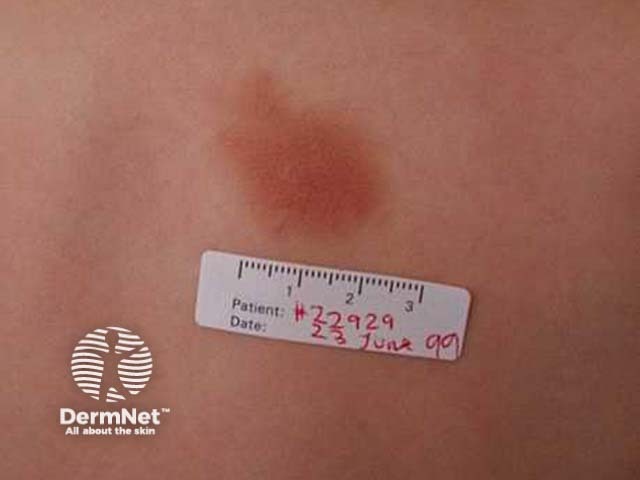Main menu
Common skin conditions

NEWS
Join DermNet PRO
Read more
Quick links
For each of the ten cases, study the image(s) and then answer the questions. You can click on the image to view a larger version if required.
Each case should take approximately five minutes to complete. There is a list of suggested further reading material at the end of the quiz.
When you finish the quiz, you can download a certificate.


What is this condition?
This is a solitary mastocytoma, a benign developmental tumour of mast cells. It presents as a yellow or tan nodule or plaque at birth or arising within a few months of birth. Urtication may arise spontaneously or after rubbing the affected area. In those under 3 years of age, vesiculation may occur.
What has been done to make the lesion change in appearance? Whose sign is this?
The lesion has been firmly rubbed or scratched a few minutes earlier. It has urticate, a characteristic of mast cell disorders known as Darier's sign.
How should it be treated?
A solitary mastocytoma does not generally require treatment. Pruritus resulting from urtication of a mastocytoma tends to be mild and last a matter of minutes. If the symptom is distressing, oral antihistamines can be used.
Alcohol, anticholinergic agents, aspirin, narcotics and Polymyxin B sulphate can aggravate symptoms. These are more of a problem to those with generalised mastocytosis such as urticaria pigmentosa.
When mastocytosis arises in a young child, improvement in symptoms and signs can be expected within a few years. It may disappear altogether before adulthood.
Mastocytoma or mastocytosis arising in an adult may persist indefinitely and may be associated with benign or malignant systemic infiltration of mast cells.